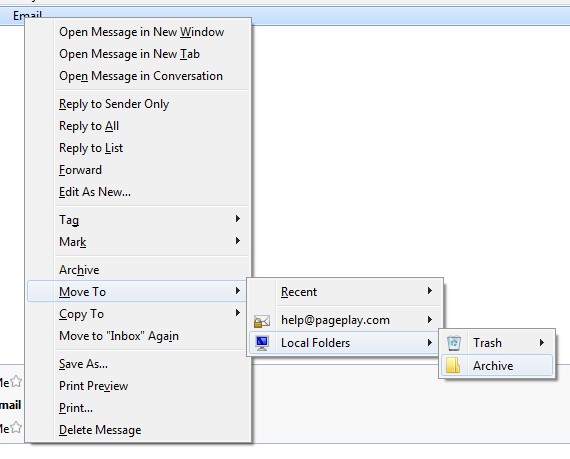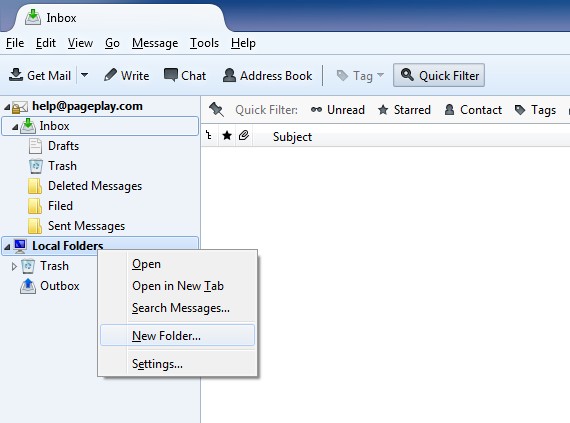

You can define the structure of the archive folder by clicking the Archive options. In the Message Archives section, use the settings in Keep message archives in to set the desired location. In Tools Edit > Account Settings, select the desired email account in the left panel, and then select the Copies & Folders setting. The location of archived messages can be configured individually for each email account. How do I configure archiving? Configure archive location It is recommended that you not select more than 2,000 messages at a time. To archive one or more messages, select the desired messages and then click on the Archive button, or simply press A on your keyboard. Archived messages are indexed by Thunderbird's search. Messages can only be archived manually, not automatically.

This makes it easy to organize archives or move them to a backup device, and keep the Inbox clean.

There are several ways to manually look for new email using Thunderbird. If you want Thunderbird to look for new email at certain time intervals (maybe every 20 or 30 minutes), select the Check for new messages every 10 minutes check box and enter a different number into the text box.De-select this check box if you don't want Thunderbird to get messages at start up. Click the Check for new messages at startup check box to have Thunderbird get new email when you launch it.Click Server Settings to open the dialog box where you tell Thunderbird when to look for new mail.On Linux, go to the Edit menu and click Account Settings.On Windows and Mac OS, go to the Tools menu and click Account Settings.Let's take a look at how to configure Thunderbird's refresh schedule and at how to get emails manually. You can also manually check for new messages in your account. Typically, Thunderbird puts the messages into your Inbox folder. By default, it looks for new messages each time you start it and then it rechecks at ten minute intervals. When you first set up your email accounts, Thunderbird configures itself to get new email automatically.


 0 kommentar(er)
0 kommentar(er)
